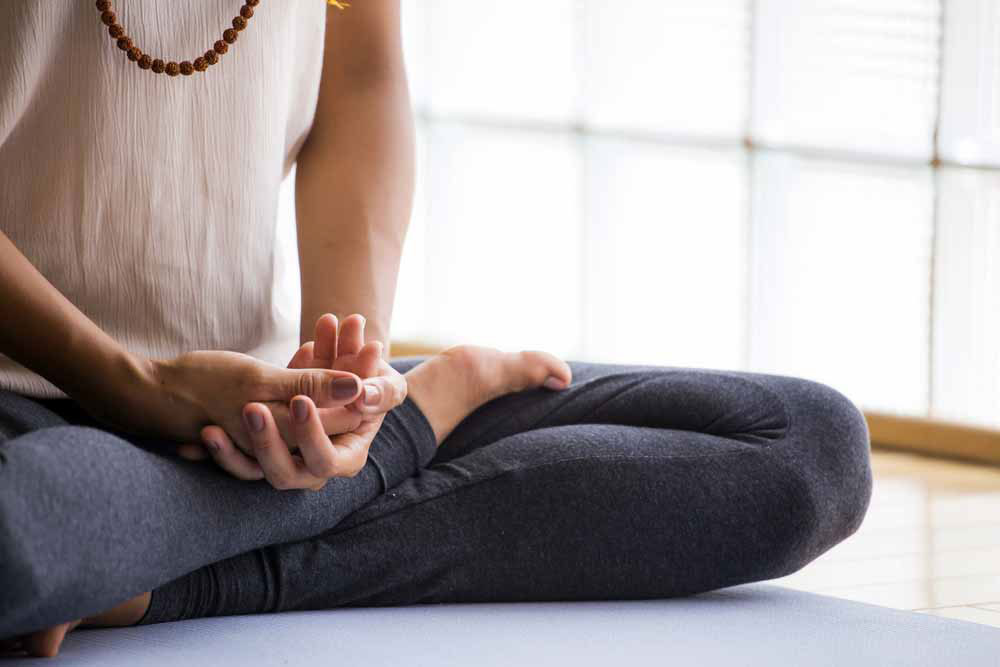Is it possible to have control over your mind? As per experts, it’s a process, which takes years to master. Meditation is a significant starting point to achieve the goal as it helps align your thoughts and gain better perspective. Over time, it enables you to observe your thoughts without judgement, and understand yourself better. Here are seven types of meditation that you can practice:
1. Mindfulness Meditation

A popular technique in the West, this is based on the teachings of the Buddha. The focal points include practicing mindfulness and understanding the workings of the mind, which are key to overcome negative thought processes, and lead content lives. This form of meditation helps you focus, and be present in the moment. As per experts, practising mindfulness may help reduce depression, stress, and anxiety. It may also bring that much needed sense of calm you need to deal with difficult situations. Find a quiet corner and sit with your back straight, then close your eyes and take deep breaths. If you find yourself getting distracted by your thoughts, gently let them pass without trying to suppress them. Using breath work, you can align your mind to the current surroundings and be much more composed.
2. Movement Meditation

Unlike the regular forms of meditation which require you to stay in one place, movement meditation is about being on the go, and concentrate on your body while at it. You could start with walking, eventually branching out to other activities that you enjoy like gardening, playing with your pets, or a sport. For those who have trouble sitting in one place for too long, this is an ideal form of meditation.
3. Focused Meditation

There is no denying that multitasking is an art only a few possess, but focused meditation is centered on the beauty of one task at a time. The key is to avoid distractions, and be in the moment to experience every little bit of what you are doing. With practice, your concentration is bound to improve. Much like mindfulness meditation, you find a quiet spot and settle in there. Next, you close your eyes and focus on your breath, relaxing your body as you inhale and exhale. Slowly, you turn your focus to the smells and the sounds around you, basically anything which you can experience in the moment.
4. Visualisation Meditation

This type of meditation uses imagery to acknowledge our thoughts, and is a process of coming to terms with them instead of burying them at the back of our minds. You imagine scenes that calm you down and slowly let your thoughts out. Alternatively, you could also use form of meditation to paint a vivid picture of you achieving certain goals. It is practiced to boost one’s mood, and reduce stress levels.
5. Chanting Meditation

Also known as ‘Mantra’ meditation, it is prominent in Hindu and Buddhist teachings. It focuses on repetitive sounds, such as “Om”, words or religious phrases, which can be mouthed or chanted in the mind for a certain amount of time. Alternatively, you could also make up your own mantra, such as “I am full of calm and joy.” It is believed that making this a part of one’s lifestyle helps achieve a deeper level of self-awareness.
6. Progressive Relaxation

Also known as ‘Body Scan’ meditation, it focuses on different parts of the body to reduce stress and help you relax. This technique involves working on one muscle group at a time. It is best practiced when you want to unwind, preferably before bedtime to promote a good night’s sleep. Find a spot where you can settle in comfortably. Then you get started on the breath work, breathing slowly as you focus on the various target areas in the body. You can start from your feet and work your way to the forehead or vice versa, by tightening the muscles and loosening them as you breathe in and out.
7. Spiritual Meditation

Like chanting meditation, spiritual meditation too, uses words, sounds or phrases. It seeks to create a divine connection when practised in a religious context promoting self-reflection, kindness and compassion. The best time to practice would be early mornings to enable clarity of the mind and a positive outlook. A quiet place is of importance, whether you're out in the nature or facing your religious figure or deity. Once you’ve taken your position comfortably, begin deep breathing slowly. As your mind starts filling up with thoughts, process them but let them pass. Then, utter a prayer or your favourite mantra until you are in control of your breathing and thoughts. Finally, as a sort of a cool down process, you can focus on your thoughts or the surroundings and experience them fully. As you feel yourself calming down, you can slowly open your eyes and bring your breathing back to normal.